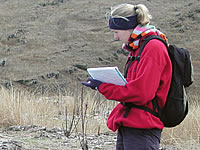|
|||||||||||||||||||||||||||||||||||||||||
| Environmental Geophysics - GEOS6733 | |||||||||||||||||||||||||||||||||||||||||

Description Note: This course was previously offered as GEOS9633 Geophysical Tech in G'water, Eng & Agriculture, but was changed effective 2012.
This is a 3 day field course run at the UNSW Wellington Farm. Each day, students will be given short lectures on the theory behind various geophysical methods. This will be followed by field measurements, data processing, data analysis and presentation of the results to the class. Methods covered will include: resistivity imaging, electromagnetic surveying, self potential, time-domain reflectometry, microgravimetry, sonar streamflow measurements, borehole methods, optical geophysics and water quality, LiDAR fluorescence and remote sensing of surface water quality, UV and fluorescence water quality monitoring in aquatic systems. Note: The 3 day Wellington Farm field trip is a compulsory part of the course. There is a fee associated with the field trip to cover the costs of food, accommodation and some activities. Prerequisites: Introductory statistics , and an Earth Science or Engineering degree. Assumed knowledge: A background knowledge of rock and sediment types, faulted and folded geological settings, geomorphology, and surface water and groundwater is assumed.
|
|||||||||||||||||||||||||||||||||||||||||


